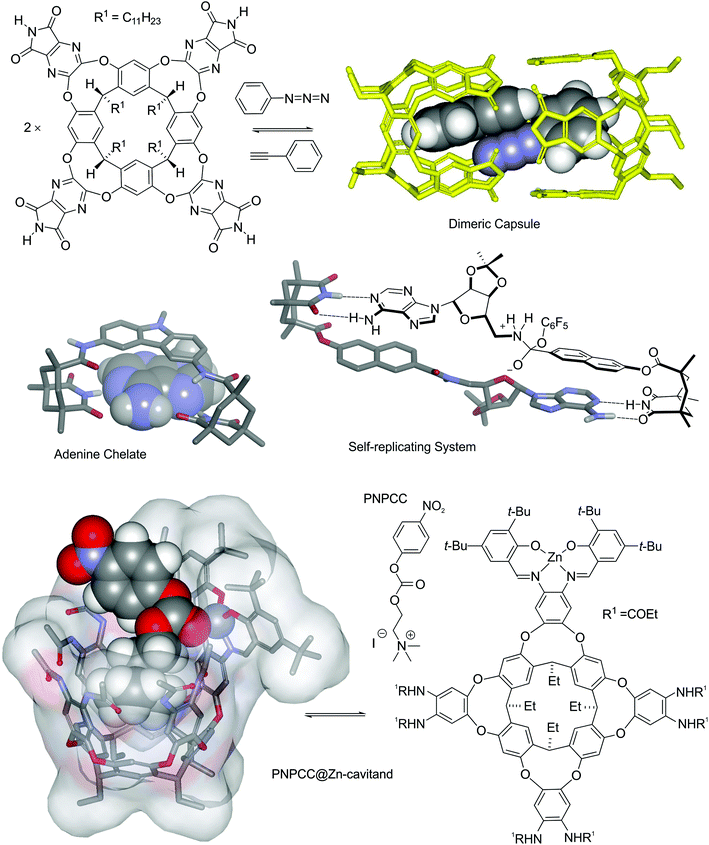Editorial: In celebration of the 75th birthday of Professor Julius Rebek, Jr.
Pablo
Ballester
 *ab and
Frank
Würthner
*ab and
Frank
Würthner
 *c
*c
aInstitute of Chemical Research of Catalonia (ICIQ), The Barcelona Institute of Science and Technology, Avgda. Països Catalans 16, 43007 Tarragona, Spain
bICREA, Passeig Lluís Companys, 23, 08010, Barcelona, Spain. E-mail: pballester@iciq.es
cInstitut für Organische Chemie & Center for Nanosystems Chemistry, Universität Würzburg, 97074 Würzburg, Germany. E-mail: wuerthner@uni-wuerzburg.de
Julius Rebek, Jr. was born in Hungary in 1944 and grew up in Kansas in the USA. After his undergraduate education at the University of Kansas and his PhD studies at the Massachusetts Institute of Technology with D. S. Kemp (1970) he began his career as an Assistant Professor at the University of California at Los Angeles. Here he developed the three-phase test for reactive intermediates. Cyclobutadiene, singlet oxygen, monomeric metaphosphate and acyl imidazoles are among the reactive species detected with this test. Next, at the University of Pittsburgh where he rose to the rank of Professor, he entered the field of bioorganic and supramolecular chemistry. During this time he described some of the pioneering and most striking examples of synthetic allosteric receptors. The working strategies incorporated in his receptor design have inspired a wide range of sophisticated and complex synthetic allosteric systems. His early designs of allosteric systems can be indeed considered as primitive examples of molecular machines, i.e. rotors. He also developed synthetic cleft-like receptors for molecular recognition studies. Here he recognized the U-shape provided by derivatives of the Kemp triacid which became a key element in his cleft designs. The well-defined and simple structures of the early hydrogen-bonded complexes constituted the supramolecular building blocks for his subsequent research on template catalysis and self-replication. This research was mainly developed at the Massachusetts Institute of Technology. Next, he realized that the ultimate form of molecular recognition is provided by receptors that completely surround the target. To this end, he used multiple copies of small molecules for the self-assembly of molecular capsules that were stabilized exclusively by hydrogen-bonding interactions. In the Scripps Research Institute, he developed numerous molecular capsules to explore the interactions of molecules held at close range and to promote the chemical reactivity between encapsulated partners. He also demonstrated that many traits regarded as exclusive attributes of proteins can be replicated in synthetic cavitands. In recent years, he has pursued molecular recognition studies in water using water-soluble versions of his molecular capsules and cavitands.
Julius Rebek Jr. has been visiting Professor at the Technical University of Munich (Germany, 1981), University of Castellon (Spain, 1986), École normale supérieure de Paris (France, 1997), Harvard University (USA, 2002), University of Paris (France 2008), Ludwig Maximilian University of Munich (Germany, 2009), Free University of Berlin (Germany 2009) and Fudan University (China, 2013–2016). He has received honorary PhD degrees from the Universities of Bonn (Germany) and Jaume I (Spain). He is a member of the U.S. National Academy of Sciences, the Royal Swedish Academy, the Hungarian Academy of Sciences, and the European Academy of Science. He is also a Fellow of the Royal Society of Chemistry and of the American Academy of Arts and Sciences.
Because the elegance of his molecules was not easy to illustrate in the conventional way, Julius Rebek Jr. also pioneered a new way of presenting supramolecular complexes which is interesting to follow in his more than 500 publications from 1970 to 2019. A small collection of them, redrawn for the occasion, is presented in Fig. 1. On behalf of all the contributors to this special issue, we want to wish Professor Julius Rebek, Jr. a very happy 75th birthday and all the best for many years to come.
 | ||
| Fig. 1 Illustrative examples of molecular structures synthesized and investigated in the Rebek laboratory. | ||
| This journal is © the Partner Organisations 2019 |
